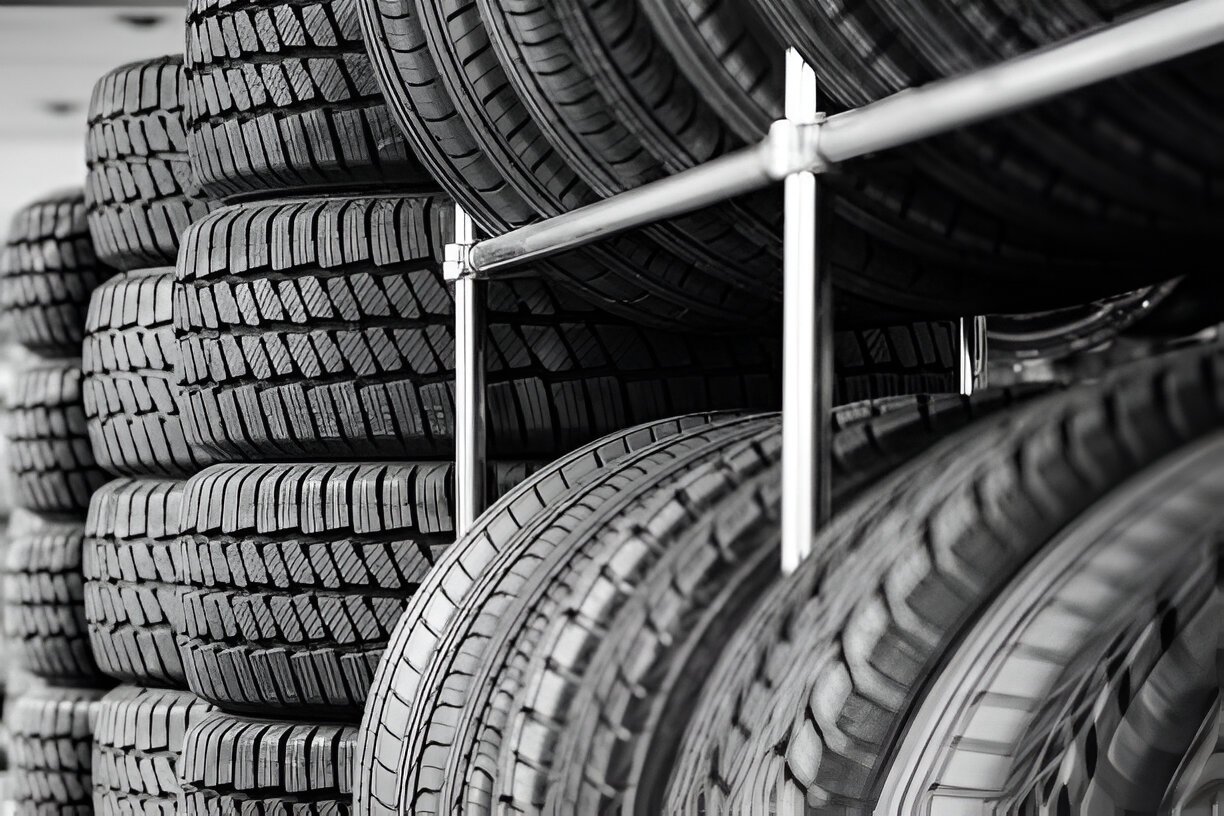Last Updated on August 2, 2024
Unlocking the Perfect Time to Buy Tires
When making large purchases, timing is often essential for obtaining the best offers and maximizing savings. This idea also applies to purchasing tires. This detailed guide will delve into the complexities of tire buying scheduling and disclose the secrets that will allow you to make smart choices. Whether you’re a seasoned driver or a first-time car owner, knowing when and why to replace your tires can greatly impact your budget and driving experience.

Why Timing Matters in Tire Purchases
Tire purchases are something that only some people make on the go. They care about your vehicle’s safety, performance, and overall longevity. Here’s why timing is important when buying tires:
- Seasonal Variations: One of the most important components of timing is understanding how seasons influence tire prices and performance. Different tire types are designed to perform well in specific weather conditions. For example, summer tires work best in warm weather, whereas winter tires are designed for cold, snowy situations. By choosing tires that correspond to the upcoming season, you can assure your safety on the road and possibly get discounts on off-season tires, better deals, and promotions as retailers seek to clear inventory. Understanding these fluctuations in demand can help you time your tire purchase strategically.
- Manufacturer Promotions: Tire manufacturers often run promotions and rebates during specific times of the year. These promotions can lead to substantial savings, so it’s essential to watch for manufacturer incentives and special offers. Timing your purchase to coincide with these promotions can significantly reduce costs.
Benefits of Buying Tires at the Right Time
Savings. Purchasing during seasonal promotions or clearance sales might result in lower prices and long-term financial rewards.
Purchasing tires at the appropriate time provides various benefits. First and foremost, it dramatically improves traffic safety. Equipping your vehicle with tires suitable for the current season improves traction and handling, lowering the danger of an accident, particularly on wet or slippery roads. Additionally, buying tires intelligently might result in significant costs. Furthermore, using the right tires for the season increases safety and improves your car’s overall performance in fuel efficiency, braking, and cornering capabilities. Seasonally suitable tires wear less, resulting in a longer life for your tire investment.
Finally, having the correct tires for the present weather conditions gives you peace of mind, especially during hard seasons like winter or heavy rain, knowing that your car is ready for the road ahead.
Making a tire purchase right now offers many advantages beyond saving money. Here are some key benefits:
- Improved Safety: Choosing the right tires for the season ensures proper traction and handling, significantly enhancing road safety. This is especially crucial in adverse weather conditions, where having the appropriate tires can prevent accidents.
- Enhanced Performance: Tires that match the season and road conditions provide better performance, including improved fuel efficiency, braking, and cornering capabilities. This not only improves your driving experience but also prolongs the life of your tires.
- Cost Savings: Buying tires when prices are lower, such as during off-peak seasons or when manufacturers offer promotions, can lead to substantial cost savings. Over time, these savings can significantly impact your overall budget.
Seasonal Insights
When it comes to tire shopping, understanding the changing seasons can significantly affect your driving experience and budget. Each season presents unique considerations and opportunities for tire purchases:
- Spring: The Prime Season for Tire Shopping: With the transition from winter to spring, switching to all-season or summer tires is crucial for improved traction on wet roads. Look out for spring promotions to find deals on the right tires for this season.
- Summer: Is It the Right Time for Your Tire Purchase? Summer tires shine in warm and dry conditions, offering superior grip and handling. This season is perfect for investing in tires designed for optimal performance during hot weather.
- Fall: Hidden Opportunities for Tire Bargains: Fall brings clearance sales on summer and all-season tires, and it’s an excellent time to prepare for winter by switching to winter tires early.
- Winter: Navigating the Cold Season Tire Market: Winter tires are essential for safety in cold climates, offering enhanced traction on icy and snowy roads. Consider whether studded or non-studded tires are appropriate for your region.
Awareness of these seasonal tire insights will help you choose the right tires at the right time, ensuring your safety and saving you money in the long run.
Spring: The Prime Season for Tire Shopping
As the temperatures rise and the snow melts, spring emerges as a prime season for tire shopping. Here’s why:
- Changing Road Conditions: Spring marks the transition from ice and snowy roads to rainy and often muddy conditions. All-season tires are popular because they provide exceptional traction in both wet and dry weather.
- Safety Considerations: Winter tires are designed for low weather and snow, making them less efficient as temperatures rise. Switching to all-season or summer tires in the spring guarantees that your vehicle has sufficient handling and traction, lowering the likelihood of an accident.
- Discounts and Sales: During the spring season, many tire dealers and manufacturers offer discounts and sales to encourage customers to prepare their vehicles for the warmer months. Look for these promotions to save money on your tire purchase.
Summer: Is It the Right Time for Your Tire Purchase?
Summer is when road conditions and temperatures largely differ from winter’s. Here’s why summer can be the right time for your tire purchase:
- Optimal Performance: Summer tires are designed to perform exceptionally well in warm and dry conditions. They have a different tread pattern and rubber compound for maximum grip and handling on hot pavement.
- Fuel Efficiency: Summer tires are typically more fuel-efficient than their winter counterparts. This can result in cost savings on fuel over the summer months.
- Longevity: Using the right tires for the season can prolong the life of your tires. Using summer tires during the warmer months means your winter tires are not subjected to unnecessary wear, increasing their lifespan.
Fall: Hidden Opportunities for Tire Bargains
Fall is often considered a transitional season for tire shopping, but it can present hidden opportunities for tire bargains:
- Clearance Sales: As winter approaches, some retailers may offer clearance sales on summer or all-season tires they want to clear from their inventory. This can be an excellent time to purchase tires at a discounted price.
- Early Winter Preparation: For those anticipating early winter weather, fall is an ideal time to switch to winter tires before the first snowfall. Buying winter tires in the fall ensures you are well-prepared and can avoid the rush when demand is high.
Winter: Navigating the Cold Season Tire Market
Winter is a critical season when tire choice can have a significant impact on your safety and driving experience:
- Winter Tire Necessity: Investing in winter tires is essential if you live in an area with cold temperatures and frequent snowfall. These tires are designed to provide superior traction in icy and snowy conditions.
- Safety First: Winter tires significantly improve braking distances and overall handling on slippery roads. This extra safety margin is invaluable during the winter months.
- Studded or Non-Studded: Depending on local regulations and personal preference, you can choose between studded and non-studded winter tires. Studded tires provide excellent grip on icy surfaces but may be restricted in some areas due to road damage concerns.
Factors Affecting Tire Prices
Many factors influence tire prices, which consumers should consider before purchasing. One of the most important factors is the law of supply and demand. Seasonal variations are important, with demand for different tire types varying depending on the season. Geography also has an impact, as regions with specific weather conditions may have a higher demand for certain tire types. Economic factors such as market conditions and consumer spending can also influence tire prices, resulting in competitive pricing during economic downturns.
Moreover, tire size can affect pricing, with standard sizes being more readily available and competitively priced compared to less standard sizes. Understanding these factors helps consumers make informed decisions and find the best tire deals. When buying tires, it is important to understand the various factors influencing their prices. These factors can vary throughout the year and significantly determine how much you’ll pay for your new set of tires. Let’s dive into the key elements that affect tire prices:

Understanding Supply and Demand Dynamics
Tire pricing depends heavily on supply and demand dynamics. The changing seasons significantly impact consumer demand for specific tire types. For example, as temperatures drop, demand for winter tires rises, whereas summer tires become more popular in the warmer months. This fluctuation affects tire prices, with higher demand frequently resulting in higher costs.
Furthermore, geographical factors come into play, as regions with different weather patterns may have varying demands for tires designed for those conditions. By understanding these supply and demand dynamics, consumers can better time their tire purchases to secure the best deals and ensure they have the right tires for the season.
The law of supply and demand is a fundamental driver of tire prices. Here’s how it works:
- Seasonal Demand: Tires have seasonal demand patterns. For example, there’s a higher demand for winter tires as winter approaches and for summer or all-season tires as warmer weather arrives. This fluctuation in demand can lead to price variations.
- Geographical Factors: Local weather conditions and geography can also impact demand. Areas with harsh winters may see a surge in winter tire demand, while regions with consistent warm weather may have a higher demand for summer tires.
- Economic Factors: Economic conditions can influence consumer spending. During economic downturns, consumers may be more price-sensitive, leading to increased competition among tire retailers and potential price reductions.
- Tire Size: The size of the tire you need can affect pricing. Standard tire sizes may be more readily available and competitively priced, while smaller standard sizes may be costlier due to lower production volumes.
The Influence of Tire Manufacturers
Tire manufacturers significantly influence tire prices. Established brands with strong reputations typically command higher prices because consumers trust their quality and performance. Manufacturers invest in R&D to create innovative tire technologies that improve performance, safety, and longevity. These advanced features can lead to higher prices.
Furthermore, manufacturers provide tiered product lines, ranging from low-cost options to premium tires. This tiered approach addresses various consumer needs and budgets, allowing for price differentiation. Production costs, such as raw materials, labor, and manufacturing processes, are also considered when pricing tires, influencing manufacturing and retail prices.
Tire manufacturers play a significant role in setting prices. Here’s how they impact tire costs:
- Brand Reputation: Established tire brands with a strong reputation for quality and performance typically charge higher prices. Customers are willing to pay more for well-known and trusted brands.
- Quality and Technology: Manufacturers invest in R&D to develop innovative tire technologies that enhance performance, safety, and longevity. Tires with advanced features and materials may have higher prices.
- Tiered Product Lines: Many tire manufacturers offer tiered product lines, ranging from low-cost options to premium tires. These product tiers meet various consumer needs and budgets, allowing for price differentiation.
- Production Cost: Production costs, including raw materials, labor, and manufacturing processes, can vary. These factors influence tire manufacturing costs, which affect retail prices.
Tire Retailer Promotions and Sales
Tire retailers often run promotions and sales to attract customers and clear inventory. These promotional strategies allow consumers to take advantage of low-cost tire deals. Seasonal sales, such as spring or fall promotions, cater to changing consumer needs by offering discounts on tires appropriate for the upcoming season. Manufacturers may also offer rebates or cash-back incentives to entice customers to choose their brand. These rebates can add up to significant savings when combined with retailer discounts.
Tire retailers may also offer discounted bundled packages that include additional services such as installation, wheel balancing, or alignment, providing buyers with added value. Furthermore, clearance sales on older tire models or overstocked items can provide opportunities to purchase quality tires at a lower cost. Understanding and taking advantage of these retailer promotions and sales can lead to significant savings on tire purchases.
Tire retailers frequently offer promotions and sales to attract customers and clear inventory. Here’s how these promotions may impact tire prices:
- Seasonal Sales: Retailers often offer discounts on specific tire types to align with seasonal demand. Look out for spring or fall promotions when retailers may reduce prices on last season’s tires.
- Seasonal Sales: Retailers often offer discounts on specific tire types to meet seasonal demand. Look for spring or autumn promotions, during which retailers may lower prices on last season’s tires.
- Manufacturer Discounts: Tire manufacturers may offer rebates or cash-back incentives to encourage customers to choose their brand. When combined with retailer discounts, these rebates can add up to significant savings.
- Retailers may offer bundle deals that include tire installation, wheel alignment, and other services at a reduced price. These bundles can add value for consumers.
- Clearance Sales: To make room for new inventory, retailers may offer clearance sales on older tire models or overstocked items. Clearance sales can be a great way to find high-quality tires at low prices.
Tire Shopping Strategies
Practical tire shopping strategies can help consumers make informed decisions and get the best deals. Comparison shopping, in which customers compare prices from various retailers online and in-store, is an important consideration. Additionally, checking for manufacturer promotions, rebates, and customer reviews and ratings can help you identify the best tires.
Exploring tire packages that bundle services like installation or wheel alignment can provide added value. For some buyers, purchasing a complete set of four tires can also be more economical, ensuring uniformity in tire performance. When buying tires, the right strategies can help you find the best deals, save money, and make an informed purchase. In this guide, we’ll explore effective tire shopping strategies to ensure you get the most value for your investment:
How to Identify the Best Deals
Finding the best tire deals requires a combination of research and savvy shopping. Comparison shopping is a fundamental approach that allows customers to compare prices from various retailers, both online and offline, for the exact tire model and size they require. Seasonal promotions, manufacturer rebates, and customer reviews can help you find the best tires for your budget.
Furthermore, taking advantage of tire packages that include installation and wheel balancing services can provide additional value. Inquiring about price matching for the same tires at another retailer can save costs. Finding the best tire deals necessitates some research and strategic shopping. Here’s how to identify and secure the top deals:
- Begin by comparing prices from various tire retailers. Online tools and websites simplify comparing prices for the specific tire model and size you require. Consider both local brick-and-mortar businesses and online retailers.
- Keep an eye out for manufacturer promotions and rebates. Many tire manufacturers provide seasonal promotions or cashback that can greatly reduce the total cost of your tires.
- Check out customer reviews and ratings for the tires you’re interested in. Real-world experiences can provide useful information about a tire’s performance, longevity, and value for money.
- Tire Packages: Some retailers offer tire packages that include additional services like installation, wheel balancing, and alignment for a discounted price. These packages can be both affordable and convenient.
- Consider Purchasing Sets: Buying a complete set of four tires can be more cost-effective than buying them individually. Furthermore, it ensures uniform tire performance.
Tips for Negotiating Prices
Negotiating tire prices can be a worthwhile endeavor for budget-conscious consumers. Being well-informed about the market value of the desired tires is essential, as it provides a basis for negotiations. Requesting price matching when a lower price is found elsewhere and considering bulk purchases can result in discounts.
Here are some tips to help you negotiate effectively:
- Be Informed: Research the market value of the tires you want to buy to understand their worth. Knowing the fair market price will give you leverage during negotiations.
- Ask for Price Matching: If you find a lower price at another retailer for the same tires, inquire if the store you prefer to buy from will match or beat that price. Many retailers have price-matching policies.
- Consider Bulk Purchase: If you have multiple vehicles or are buying tires for family members or friends, inquire about discounts for buying in bulk. Retailers may offer discounts for purchasing multiple sets of tires.
- Timing Matters: Negotiating during off-peak seasons or when retailers want to clear inventory can increase your chances of securing a better deal.
- Be Polite and Courteous: Approach negotiations with a friendly and respectful attitude. Being polite can go a long way in building rapport with the salesperson.
Online vs. In-Store Shopping: Pros and Cons
Choosing between online and in-store tire shopping requires weighing the benefits and drawbacks of each option. Online shopping provides a wide range of options, competitive pricing, and the convenience of shopping from home, allowing customers to easily compare prices, read reviews, and find the best deals. However, online shopping does not allow for tire inspections or immediate physical installation.
In contrast, in-store shopping allows customers to see and touch the tires, get expert advice from salespeople, and have the tires installed immediately. However, prices may be slightly higher in-store, and selection may be more limited than that of online retailers. These options are determined by individual preferences, needs, and priorities.
Deciding between online and in-store tire shopping involves weighing the advantages and disadvantages of each option:
Online Shopping:
- Pros: Online shopping offers a wide selection, competitive pricing, and the convenience of shopping from home. You can easily compare prices, read reviews, and find the best deals.
- Cons: You won’t have the opportunity to inspect the tires or get immediate assistance with installation.
In-Store Shopping:
- Pros: In-store shopping allows you to see and touch the tires, get expert advice from salespeople, and have them installed on the spot.
- Cons: Prices may be slightly higher in-store, and you may have limited choices compared to online retailers.
By following these tire shopping strategies, you can make an informed decision, secure the best deals, and ensure that your new tires meet your performance and budgetary requirements.
Maintenance and Care
Proper maintenance and care are essential for maximizing the lifespan and performance of your tires. Regularly checking and maintaining the recommended tire pressure ensures even wear and extends tire life. Wheel alignment prevents uneven tire wear caused by misaligned wheels. Periodic inspections for damage, such as cuts or punctures, help address issues promptly. Rotating tires regularly promotes even wear, and avoiding overloading your vehicle prevents premature wear.
Responsible driving habits, such as avoiding aggressive driving, contribute to prolonging tire lifespan, ultimately saving you money and ensuring safety on the road. Proper tire maintenance and care are essential for your safety on the road and maximizing the lifespan and performance of your tires. In this comprehensive guide, we’ll delve into the critical aspects of tire maintenance and care, including how to prolong tire lifespan, when and why to rotate and balance your tires, and the dos and don’ts of seasonal tire storage:
Seasonal Tire Storage: Dos and Don’ts
Proper seasonal tire storage is important for preserving tire quality and performance when they are not in use. Here are some dos and don’ts for storing your tires:
Dos:
- Clean Your Tires: Before storing, clean your tires to remove dirt, debris, and brake dust. This prevents potential corrosion.
- Maintain Proper Inflation: Inflate your tires to the recommended pressure to prevent flat spots and structural damage during storage.
- Store in a Cool, Dry Place: Keep your tires in a cool, dry area away from direct sunlight and extreme temperatures. Consider tire bags or covers to protect against UV rays and environmental elements.
- Use Tire Stands: Store tires upright or on tire stands to prevent sidewall stress.
Don’ts:
- Don’t Stack Tires: Stacking tires for extended periods can lead to deformation and damage.
- Avoid Oils and Chemicals: Keep tires away from sources of oil, solvents, and chemicals, as they can degrade rubber.
- Don’t Store on Wet Surfaces: Avoid placing tires directly on wet surfaces, which can promote mold and corrosion.
- Don’t Store Near Electric Motors: Electric motors can emit ozone, accelerating tire aging. Avoid storing tires near these sources.
By following these maintenance and care guidelines, you can ensure your tires’ longevity, safety, and performance, ultimately saving you money and enhancing your driving experience.

Conclusion & Recommendation
As we wrap up this comprehensive tire shopping guide, we’ve covered many topics to help you make informed decisions and save money when buying tires. Let’s recap the key takeaways and make recommendations for your next steps.
Recap of the Perfect Time to Buy Tires
Throughout this guide, we’ve emphasized the importance of timing when buying tires. Here’s a brief overview of the best times to buy tires:
- Spring: Consider buying all-season or summer tires as the weather warms up.
- Summer: Invest in high-performance summer tires for the hot season.
- Fall: Look for clearance sales on summer and all-season tires and switch to winter tires early if needed.
- Winter: Equip your vehicle with winter tires for safe driving in cold and snowy conditions.
Remember, timing your tire purchase according to the season can lead to cost savings and improved safety on the road.
Taking Action: Start Saving on Your Next Tire Purchase
Now that you know when and how to buy tires, it’s time to take action and save on your next purchase. To make this process even more convenient, we recommend visiting our website, Tires Easy, at https://www.tires-easy.com/.
At Tires Easy, we offer a wide selection of tires to suit your needs, whether you’re looking for all-season, summer, winter, or specialized tires. Our user-friendly website allows you to quickly compare prices, read customer reviews, and find the best deals on tires that fit your vehicle.
Take Action Now!
Click the button below to explore our extensive tire inventory and start saving on your next tire purchase.
By choosing Tires Easy, you can trust that you’ll receive quality products and exceptional service while investing in your vehicle’s safety and performance. Take advantage of our tire selection and competitive prices today, and enjoy a smoother, safer ride on the road.
FAQs
What is the best time of year to buy tires?
The best time is usually during spring or fall when tire retailers offer seasonal promotions and clearance sales. This is an ideal time to secure cost-effective deals on the right tires for the upcoming season.
When should new tires be purchased?
New tires should be purchased when your current ones exhibit signs of significant wear, such as low tread depth or visible damage. Regular inspections and monitoring of tire performance can help determine the right time for replacement.
How can I save on my tire purchases?
You can save on tire purchases by timing your buy during promotions, looking for manufacturer rebates, exploring bundled packages with installation, and considering purchasing a complete set of four tires for better value.
What is the time to change tires?
It’s time to change tires when the tread depth reaches 2/32 of an inch or if you notice signs of wear. The rule of thumb for winter tires is to install them when temperatures consistently drop below 45°F (7°C).
What’s the best month to buy tires?
March and April (spring) and October and November (fall) are typically the best months to buy tires due to retailers’ seasonal promotions and clearance sales.
When should I buy new tires?
Purchase new tires when your existing ones no longer provide adequate traction, exhibit uneven wear, or show signs of damage. Regular tire inspections can help determine the right time.
When should I buy all-season tires?
All-season tires are a versatile choice for year-round driving. Consider buying them when you prefer convenience and want to keep tires the same between seasons.
Should you buy four new tires at once?
Yes, replacing all four tires simultaneously is advisable to ensure uniform performance, handling, and safety. Buying a complete set also extends tire lifespan and maintains even wear.
-
Writer










